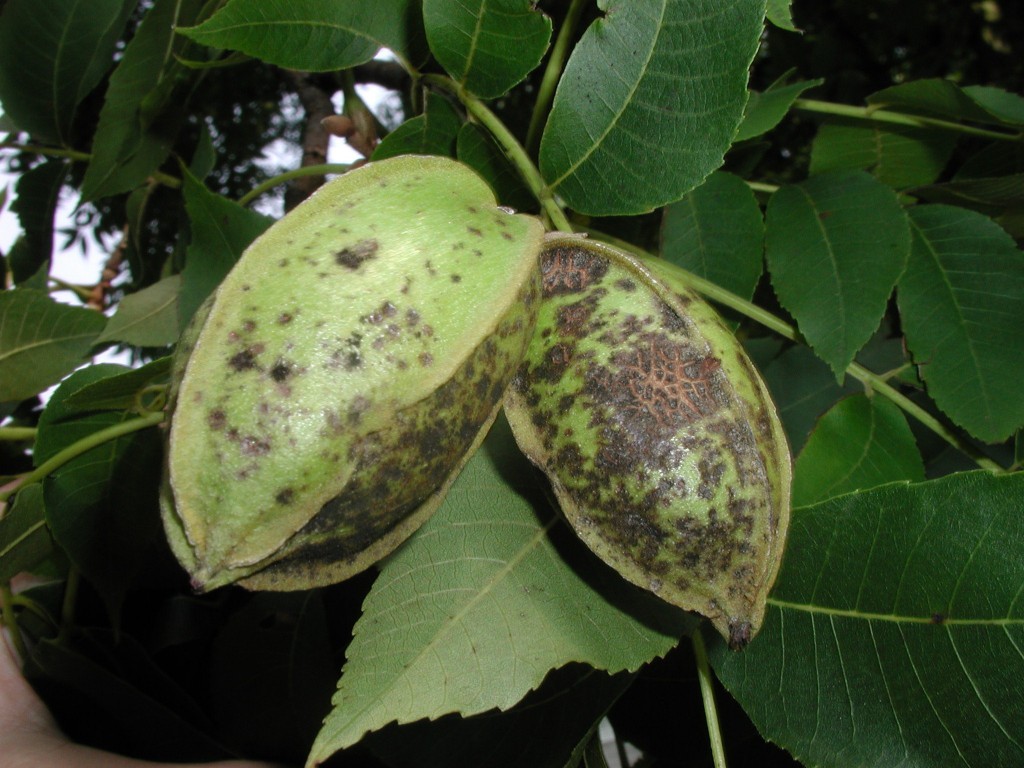By Clint Thompson
Pecan season is nearing harvest time for growers in Georgia and Alabama. But that doesn’t mean producers should skip any fungicide sprays for scab disease these last few weeks of the season.

Lenny Wells, University of Georgia Extension pecan specialist, highlighted the need for scab management with harvest just a few weeks away on the earliest varieties.
“If they’re getting rainfall more than two or three times a week, they probably need to tighten it up to 10 days,” Wells said. “When we’re getting close to the end, we’re at shell hardening or maybe even past shell hardening on Pawnee, usually at that point, we generally tell growers at shell hardening, you can stop with the fungicide sprays. In a lot of orchards, however, even if they are 95% clean, there’s a little scab out there and we’re continuing to get pressure.
“I’d still put one more on the Pawnee and certainly on varieties like Desirable and even Stuart, Sumner and other varieties that may not scab as bad as desirable, most of our varieties would need one or two more sprays on them.”
Scab is a fungal disease that infects the leaves or nuts of pecan trees. If it impacts the nut early enough, scab can cause the nut to blacken and fall from the tree. It thrives on trees that have received moisture, which has been the case this summer throughout the Southeast. Some growers may apply between 10 and 12 sprays during an average year to fight scab. The more it rains during the summer, the more applications a grower will have to make.
The fungal pathogen that causes scab overwinters in the tree as lesions on stems and old nut shucks that remain in the tree after harvest. When temperatures begin to warm in the spring, the fungus becomes active and starts to produce new spores that are spread by rain and wind.









